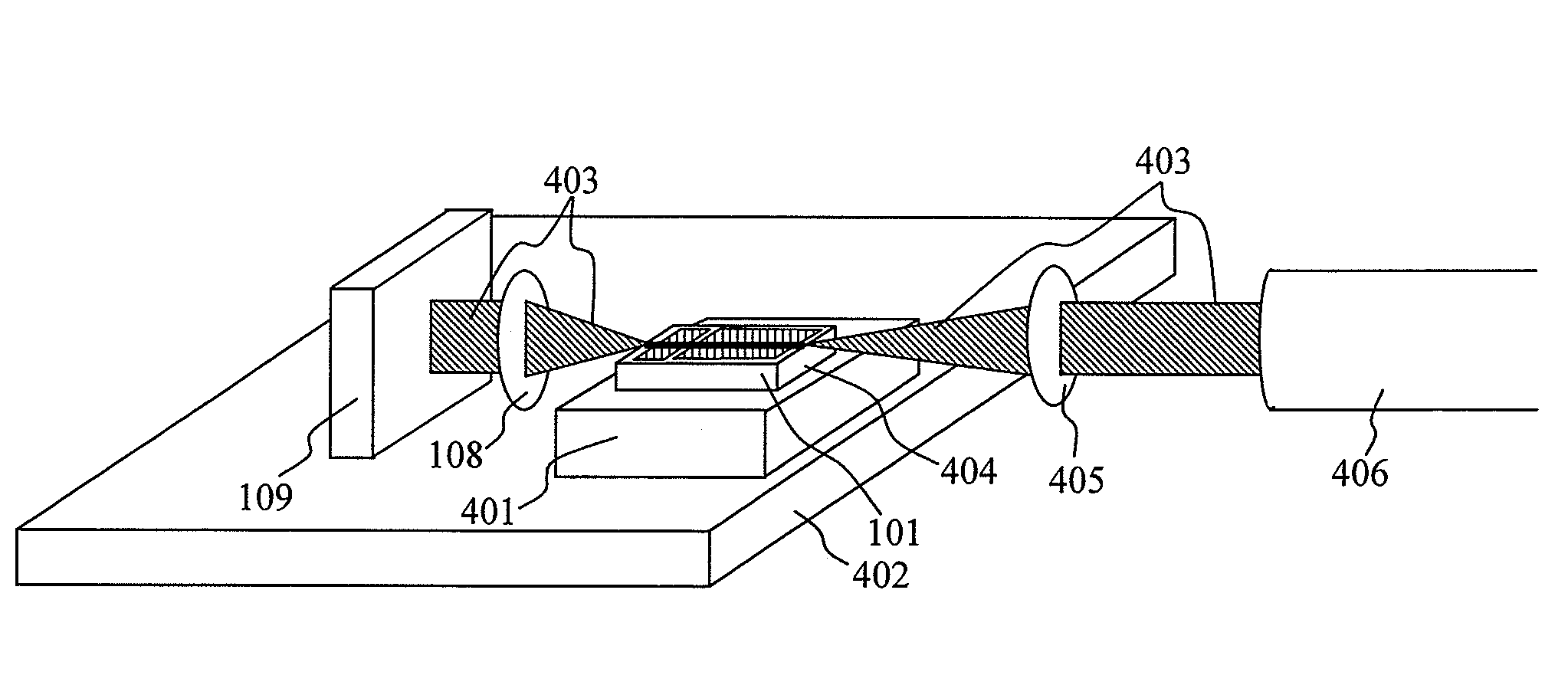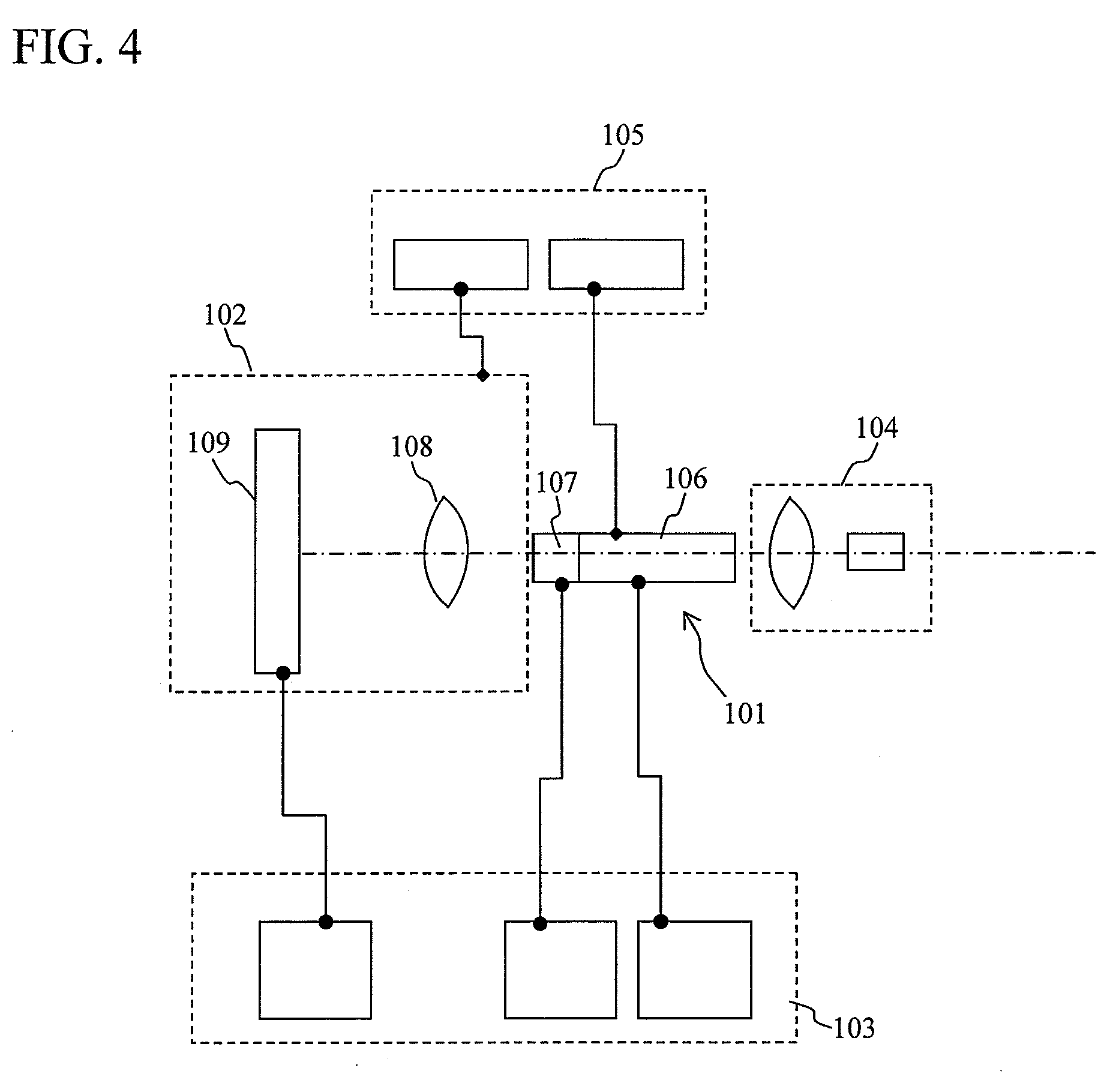Wavelength tunable laser apparatus and wavelength control method
a laser apparatus and wavelength control technology, applied in the direction of electrical apparatus, laser details, semiconductor lasers, etc., can solve the problems of increasing the amount of current, the optical axis is likely to deviate, and the time needed for the control is longer, so as to achieve the effect of reducing power consumption, small size and high outpu
- Summary
- Abstract
- Description
- Claims
- Application Information
AI Technical Summary
Benefits of technology
Problems solved by technology
Method used
Image
Examples
Embodiment Construction
[0034]Descriptions will be provided hereinafter for an embodiment of the present invention.
[0035]FIG. 4 is a diagram showing a rough configuration of a wavelength tunable module. FIG. 5 is a schematic diagram showing parts constituting a laser cavity. The wavelength tunable module is configured of: a light emitting device 101 which is termed as a gain chip; a wavelength controlling optical system 102; an electrical system 103; an output optical system 104 for guiding light to a fiber; a temperature controlling system 105; and the like. The gain chip 101 is an integrated device configured of a gain unit 106 for emitting light and a phase control region 107. The wavelength controlling optical system 102 is configured of: a condenser lens 108; a tunable filter 109 which is capable of selecting wavelengths, and which is also used as a mirror (although the figure shows the tunable filter also used as the mirror, a mirror may be provided separately); and the like. As shown in FIG. 5, the ...
PUM
 Login to View More
Login to View More Abstract
Description
Claims
Application Information
 Login to View More
Login to View More - R&D
- Intellectual Property
- Life Sciences
- Materials
- Tech Scout
- Unparalleled Data Quality
- Higher Quality Content
- 60% Fewer Hallucinations
Browse by: Latest US Patents, China's latest patents, Technical Efficacy Thesaurus, Application Domain, Technology Topic, Popular Technical Reports.
© 2025 PatSnap. All rights reserved.Legal|Privacy policy|Modern Slavery Act Transparency Statement|Sitemap|About US| Contact US: help@patsnap.com



